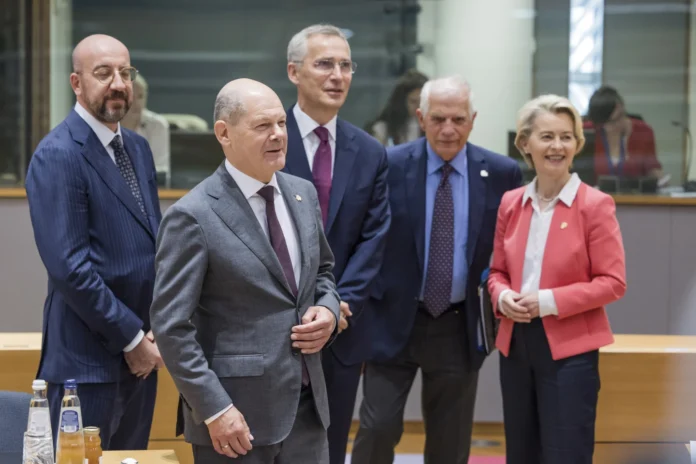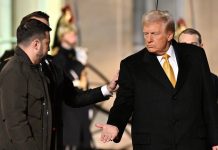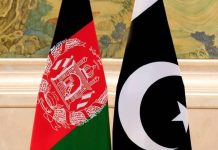BRUSSELS (AP) – At Thursday’s EU summit, NATO head Jens Stoltenberg and Ukrainian President Volodymyr Zelenskiy took center stage as EU27 leaders defended the eastern flank from Russian aggression and defended Ukraine’s He stressed the importance of strengthening defense capabilities.
Notable attendees included Zelensky, who addressed the rally via video link, and Stoltenberg, who attended an early lunch with the leaders. But the most important issue on the informal agenda was the aftermath of the weekend’s sudden uprising in Russia and its impact on President Vladimir Putin’s rule.
Arriving at the summit, Stoltenberg said: “The insurrection we witnessed over the weekend shows cracks and divisions in the Russian regime. At the same time, it is important to stress that these are internal Russian affairs.”
The EU Heads of State and Governments shared this view. EU Commission President Ursula von der Leyen stated, “This showed deep cracks in Putin’s system. This mutiny of last weekend will also have aftershocks that we will see.”
Lithuanian President Gitanas Nauseda, representing one of the EU nations bordering Russia, stressed the need for a resolute posture towards Putin, stating, “Some colleagues sometimes say that a strong Putin is less dangerous than a weak Putin. I don’t agree with that. We have to move forward and be decisive because now is a crucial moment of history.”
Latvian Prime Minister Krisjanis Karins, also sharing a border with Russia, emphasized the importance of controlling actions outside Russia, saying, “We cannot control what is happening inside Russia, but we can control what we do on the outside.”
In response to the rebellion’s chaos and instability, several member states and EU institutions affirmed their commitment to supporting Ukraine. This would involve providing additional ammunition and preventing fighting and violence from spilling over into the EU. Estonian Prime Minister Kaja Karas said: “There is no need to hesitate. We must continue to raise the price of Russia’s aggression.”
The EU is unlikely to provide military guarantees, but leaders tend to tighten the wording of summit conclusions. The latest draft demonstrates their willingness to contribute to future security efforts against Ukraine, helping to protect the country in the long term, deter aggression and resist destabilization efforts. there is
Most EU member states are also NATO members and will consider giving Ukraine additional security at the alliance summit on July 11-12, which is equivalent to full NATO membership. isn’t it. Full support for this approach is expected by the end of the two-day summit. EU countries have already provided extensive support to boost Ukraine’s military strength and aid its economy. In addition, the leaders will explore the possibility of using frozen Russian assets worth about 200 billion euros to help rebuild Ukraine.
However, as highlighted by the European Central Bank, concerns remain about the legal basis and potential risks associated with the confiscation of these assets or accrued earnings. Some countries are proposing additional random levies to fund the reconstruction of Ukraine.
Kalins said the freeze on Russian assets was “like an easy fruit to achieve”. “We need to find and mobilize legal grounds to help Russia pay for the damage it caused.”
Please note that the information provided is based on the excerpts provided and does not cover the complete content of the EU Summit or reflect the latest developments.





